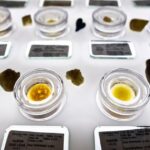MOUNT VERNON, Va. (AP) — George Washington never actually cut down the cherry tree, despite the famous story saying otherwise. However, he did store numerous bottles of cherries and berries at his Mount Vernon home.
During an archaeological dig related to a restoration project, dozens of bottles containing cherries and other berries were found preserved in storage pits beneath the cellar of his mansion overlooking the Potomac River. Jason Boroughs, Mount Vernon’s principal archaeologist, described the discovery of such well-preserved food from over 250 years ago as extraordinary.
Boroughs mentioned in an interview, “To find essentially fresh fruit after 250 years is quite remarkable. Everything had to align perfectly for this to happen.” Some bottles contained intact pieces of fruit identifiable as cherries, while others appeared to hold gooseberries or currants, although further testing is required to confirm this.
Mount Vernon is collaborating with the U.S. Department of Agriculture, which is conducting DNA tests on the fruit and examining over 50 cherry pits recovered from the bottles to determine if they can be planted. Benjamin Gutierrez, a USDA plant geneticist, acknowledged the challenge of growing a tree from a cherry pit due to most samples being waterlogged.
Despite this, Gutierrez deemed the finding of the bottles significant. Apart from DNA testing, chemical analysis may reveal if specific spices were used to preserve the fruits. Historical records indicate that George and Martha Washington enjoyed cherries, especially when infused with brandy. Boroughs suggested that these preserved cherries might have been intended for direct consumption.
The exceptional preservation quality indicates the skillful work exhibited by slaves who operated the plantation’s kitchen. The kitchen was managed by an enslaved woman named Doll, who arrived at Mount Vernon in 1758 with Martha Washington. Boroughs explained, “The enslaved individuals responsible for tending to the trees, picking the fruit, and working in the kitchen would likely have supervised and executed this process. It required a high level of expertise for the fruits to survive this way.”
Mount Vernon stumbled upon the bottles while conducting a $40 million restoration project of the mansion, slated for completion by the nation’s 250th anniversary in 2026. Boroughs clarified, “When we engage in archaeology, it involves destruction. Hence, unless there’s a valid reason to disturb those resources, we usually refrain from doing so.”
He added, “In this instance, the ground had to be disturbed due to essential structural repairs to the mansion. Thus, we conducted the excavation first. The discoveries surpassed our expectations.” The bottles are known to predate 1775, as the mansion expansion during that year covered the area with a brick floor.
Initially, Mount Vernon announced the discovery of two bottles in April, which subsequently increased to 35 bottles in six distinct storage pits as the excavation progressed. Six bottles were broken, while the other 29 remained intact. Among them, twelve contained cherries, sixteen held the other berries believed to be currants and gooseberries, and one larger bottle stored both cherries and other berries.
Boroughs believes they have recovered all the cherries and berries that survived. “There is a wealth of valuable information to be obtained from these bottles,” he remarked.
This story has been updated to correct that 29 bottles were found intact, not 19.
Copyright 2024 The Associated Press. All rights reserved. This material may not be published, broadcast, rewritten or redistributed without permission.





